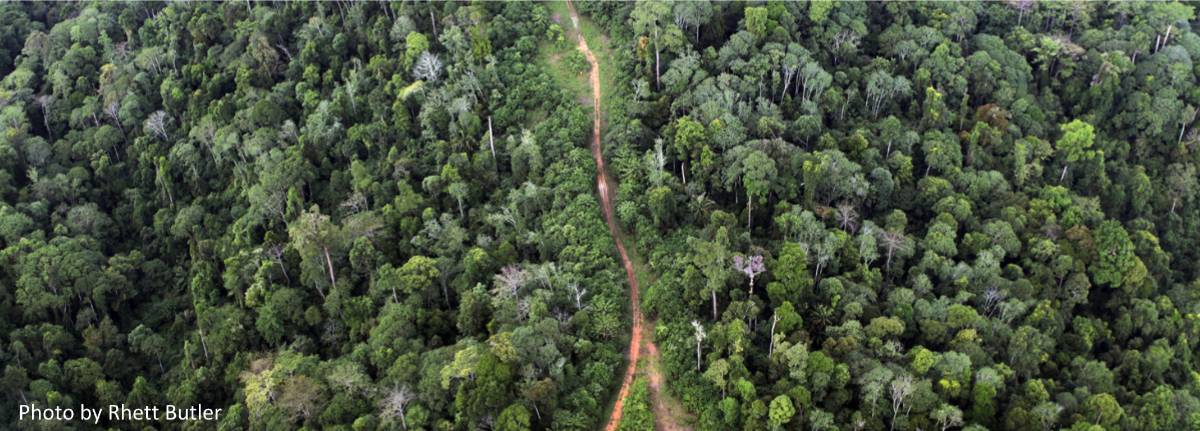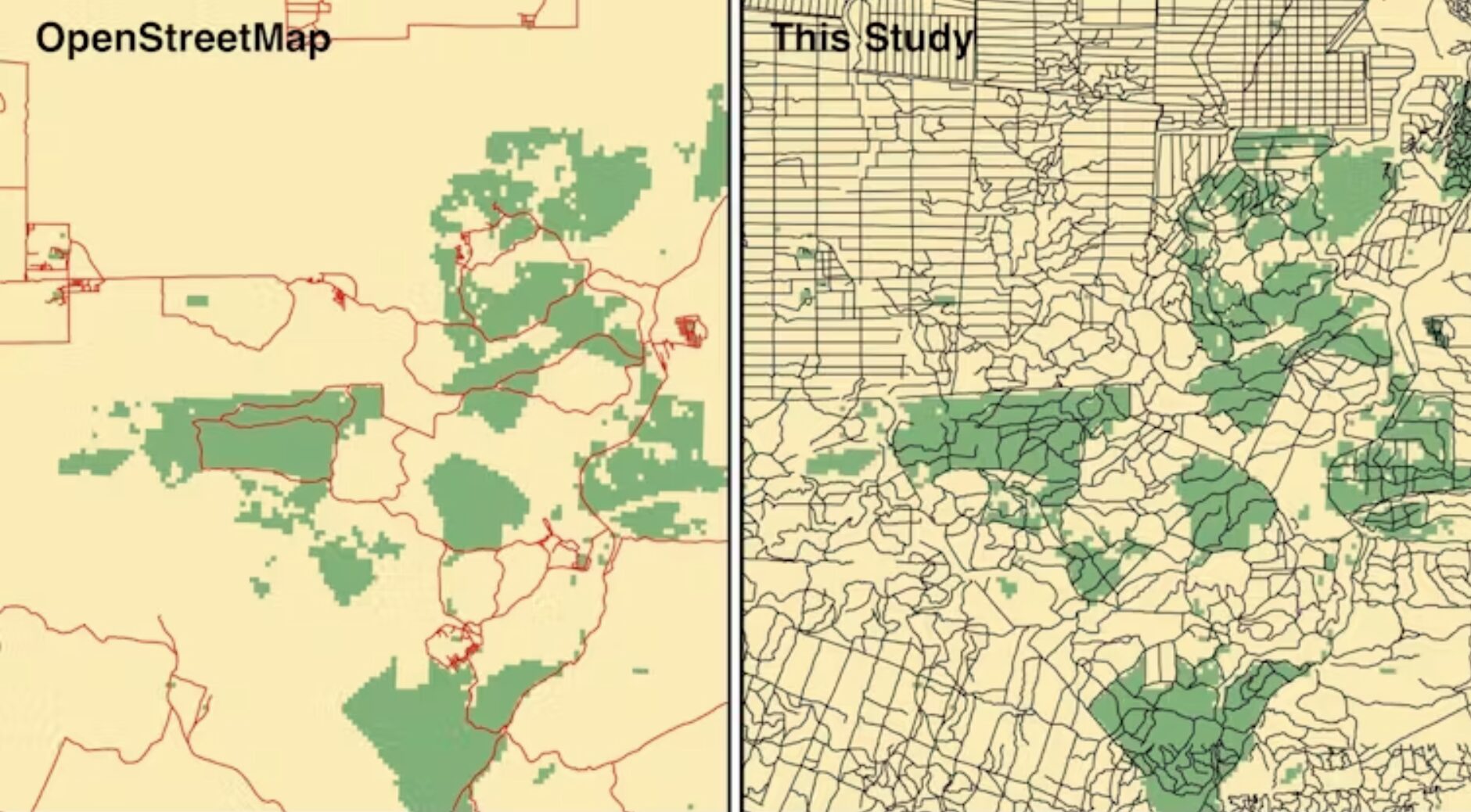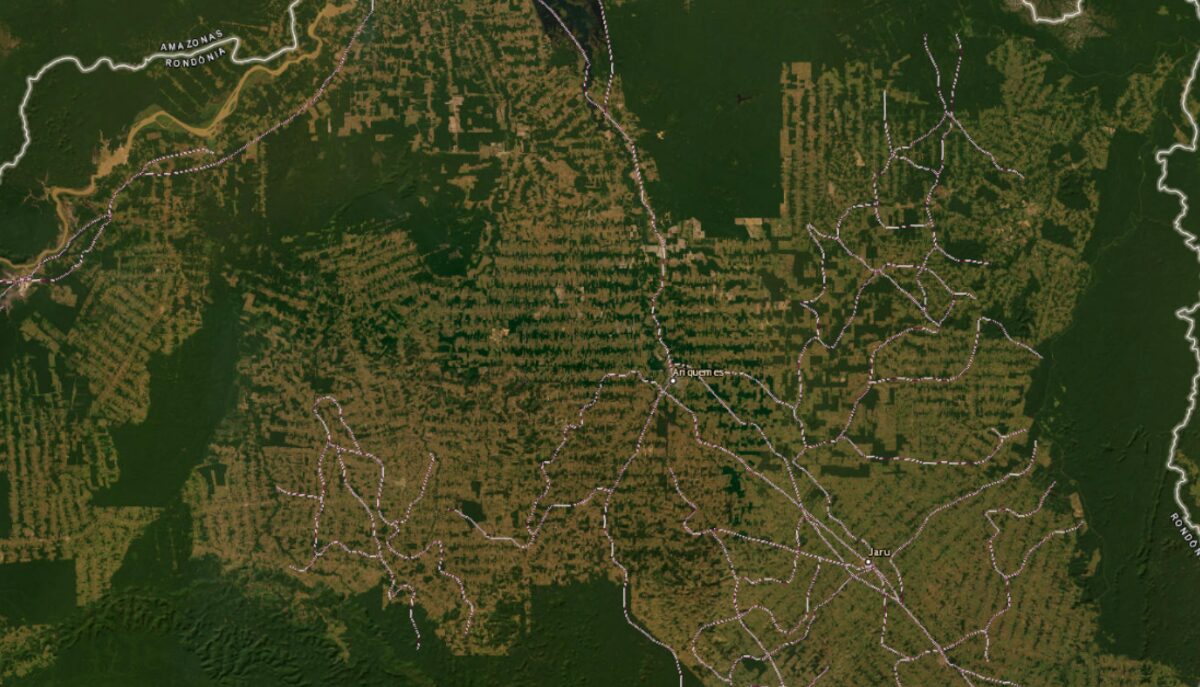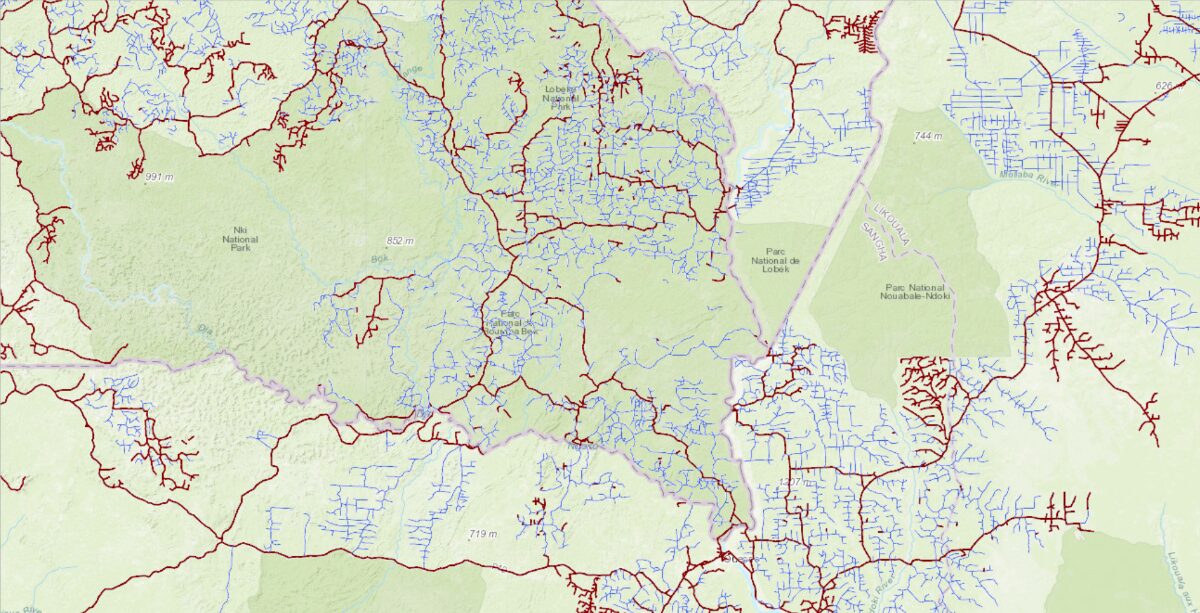Roads Drive Tropical Forest Biodiversity Loss

There are around 40 million miles of roads in the world with another 15.5 million miles projected to be added by 2050, which is the fastest expansion rate of road building in history. Roads continue to be constructed around the world including the U.S., which leads the world in the number of linear miles (>7 million miles), but the most recent concentration of new road building is in the tropical nations. Even more troubling is that many roads are being constructed informally or illegally and, therefore, do not appear on any map. These are sometimes referred to as “ghost roads”.
In a recent article in Nature, the authors conducted a study on roads in the Asia-Pacific region and found 3.0 to 6.6 times more roads exist than are shown in any leading roads dataset. These ghost roads are being built to gain access to pristine tropical forest areas for various purposes: agriculture expansion, logging, mining, poaching, and land speculators – all with serious ecological consequences. Roads were shown to be the strongest correlate to deforestation out of 38 potential variables. The authors conclude that “ghost roads are among the gravest of all direct threats to tropical forests.”

Unfortunately, the Asia-Pacific Region is not alone. The same issue has been recorded in many other parts of the world (e.g., the Amazon region and Congo Basin).


Of course, roads are a vital infrastructure for modern societies, so where should they go? An article by Distinguished Research Professor Bill Laurance, published in The Conversation, describes a global strategy for road building. Bill and his coauthors intersected areas of relative environmental value with areas of relative agricultural potential identifying priority areas for both and where in the world these two uses are in conflict.

Improving road networks in areas of high agricultural potential and low environmental value are good candidates as they have immediate value to local people. In the high environmental value areas, especially in direct conflict with potential new agricultural land, it would be wise to avoid the first cut into these areas as once there is an initial access road constructed many more roads rapidly follow with serious consequences to the local biodiversity. For example, in the Congo region of Africa, 60 percent of the forest elephant population has been lost over the last decade and the critically endangered eastern lowland gorilla (Grauer’s Gorilla) population is estimated to be 6,800 individuals.
New Publication: Chile’s Valparaíso hills on fire

Our Senior Research Scientist, Alexandra Syphard, is a co-author of the paper in Science, Chile’s Valparaíso hills on fire, which highlights human-caused ignitions, flammable plantations, and prolonged droughts making Chile one of the most fire-prone places in the world. A record-breaking Chile wildfire in February destroyed thousands of homes, caused 133 human fatalities, and burned thousands of hectares of stressed vegetation. Wildfire mitigation in Chile will require many steps, including (1) governance and land-use planning, (2) restoring and managing native forest vegetation, (3) removing highly flammable forest plantations, (4) prohibiting the conversion of recently burned native forests into exotic forest plantations or new urban developments, and (5) strengthening fire prevention programs in Chile helping reduce human-caused ignitions.